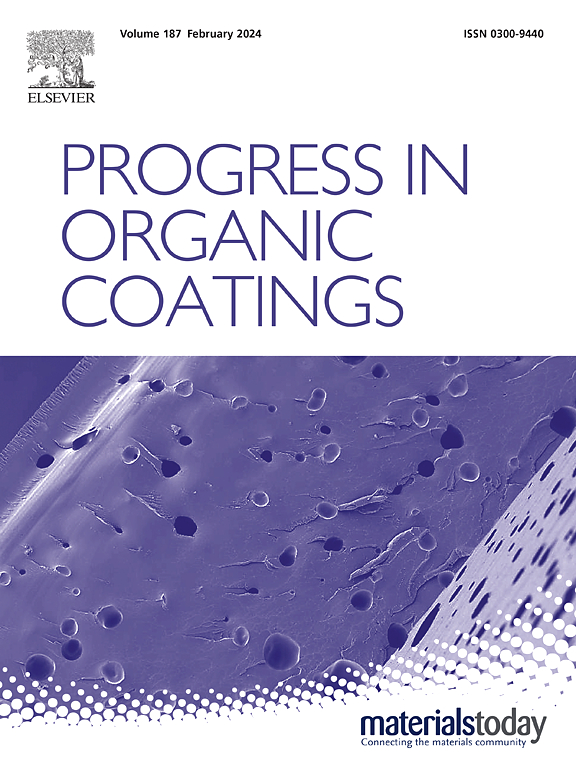Synthesis and properties of in situ prepared polyurethane/PEG-MXene nanocomposites
IF 6.5
2区 材料科学
Q1 CHEMISTRY, APPLIED
引用次数: 0
Abstract
The efficiency of flexible electronic devices based on MXene/polymer composites can be enhanced by careful design of MXenes and polymers and tailored polymer composition for enhanced electrical conductivity, thermal, and mechanical properties. This study describes the production and analysis of novel 2-[methoxy(polyethyleneoxy)6-9propyl]trimethoxysilane (PEG)-silane functionalized MXene and novel polyurethane (PU) nanocomposites with a range of soft segment contents from 30 to 60 wt%. The functionalization of titanium carbide MXene with (PEG) to produce a material with a layered structure was confirmed by Fourier-transform infrared (FTIR) analysis, X-ray photoelectron spectroscopy (XPS), and scanning electron microscopy (SEM), while transmission electron microscopy (TEM) and X-ray diffraction (XRD) analysis showed increased MXene nanosheet interlayer spacing after functionalization. After functionalization, the measured mean MXene nanosheet interlayer spacing was 1.57 μm. A series of polyurethane nanocomposites with the addition of 1 wt% PEG-MXene was synthesized in situ using a two-step polyaddition polymerization method. The prepared nanocomposites with intercalated structure had better thermal properties (Tg from 48 to 62 °C and degradation temperature from 278 to 297 °C), mechanical properties (Young's modulus from 8 to 84 MPa and tensile strength from 2 to 11 MPa), and suitable surface characteristics (low roughness coefficient, from 11 to 87 nm and similar to high water contact angle, from 73 to 109°) as compared to pure PU. The addition of PEG-MXene enhanced microphase separation (degree of phase separation from 16.9 to 50.1 %) and strengthened hydrogen bonding (hydrogen bonding index from 38.4 to 66.1 %) in the urethane structure. TEM revealed a 17 nm spacing between PEG-MXene and the PU matrix, and XPS verified the presence of PEG-MXene in PU. Among the novel materials, the nanocomposite with 50 wt% of soft segment content had the most desirable properties with regards to use in flexible electronic devices, i.e., this material had the best thermal, mechanical, and surface characteristics, including the lowest surface roughness (11 nm) and distinct microphase separation.

求助全文
约1分钟内获得全文
求助全文
来源期刊

Progress in Organic Coatings
工程技术-材料科学:膜
CiteScore
11.40
自引率
15.20%
发文量
577
审稿时长
48 days
期刊介绍:
The aim of this international journal is to analyse and publicise the progress and current state of knowledge in the field of organic coatings and related materials. The Editors and the Editorial Board members will solicit both review and research papers from academic and industrial scientists who are actively engaged in research and development or, in the case of review papers, have extensive experience in the subject to be reviewed. Unsolicited manuscripts will be accepted if they meet the journal''s requirements. The journal publishes papers dealing with such subjects as:
• Chemical, physical and technological properties of organic coatings and related materials
• Problems and methods of preparation, manufacture and application of these materials
• Performance, testing and analysis.
 求助内容:
求助内容: 应助结果提醒方式:
应助结果提醒方式:


